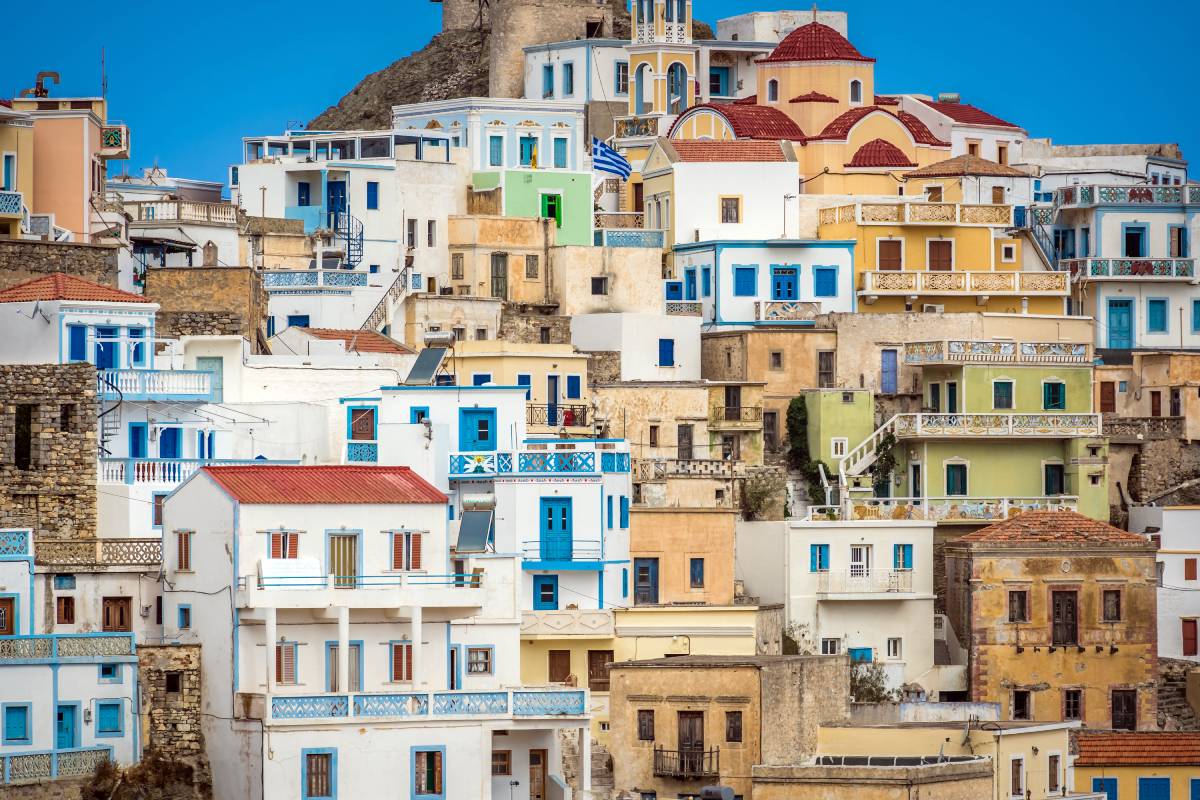Karpathos is firstly mentioned by Homer as Krapathas and the earliest occupation of the island is placed in the 2nd millennium BC by Cretans. After all, due to its geographical position, was a “bridge” between the Dodecanese and Crete. Historians and archeologists found many proofs that makes sure that this island has a rich history throughout centuries.
Make your reservation at Akropolis Village on time.
1. Neolithic Period
The first human occupation is placed around 4000-3000 BC (Late Neolithic – Early Bronze Age). The first inhabitants it it looks like they came from Crete and this is testified by the findings of their settlement in Pigadia and the two farmhouses that were excavated in Afiarti.
2. Neo-Palatial Period
During the “Age of Minoan Seafaring and Minoan Colonization” (about 1700-1450 BC) Karpathos seems to have a purely Minoan character. The historian Diodorus Sikeliotis mentions that the first inhabitants were sent as colonists by King Minos. During this period the island is economically and culturally developed. A characteristic find of the period is the Acropolis of the Mycenaeans on the hill of Paleokastro in Arkasa.
3. Archaic Period
There aren’t many findings about this period apart from the Tetrapolis of Karpathos, as Strabo implies. It was consisted of four ancient cities, as the name suggests. More information about Tetrapolis you can read in the article Karpathos Sightseeing.
4. Classical-Hellenistic Period
Karpathos is economically vibrant and culturally thriving. It developed cultural and economic relations with Rhodes as the island was included in the great naval and cultural power of the Rhodian state.
5. Roman & Byzantine period
In 42 BC the island was conquered by the Romans. Because of its geographical position, it seems to have been one of Rome’s three great naval stations in the Mediterranean. It controlled the passage of Roman ships from the south-eastern Mediterranean to the Aegean Sea. Under Diocletian (284-305 AD) it was included in the Provincia Insularum (“Province of the Islands”) with Rhodes. The presence of Christianity in Karpathos dates back quite early as evidenced by the findings of twenty early Christian basilicas found on the island.
6. Mid 7th to mid 10th century AD
The prosperity of the early Christian years of the island was violently interrupted in the 7th century with the invasions of the Persians, the Arabs and the Saracens. This was an era of decay and desolation, when pirates spread terror in the abandoned coastal settlements. This lead to the relocation of the inhabitants to the interior of the island for security reasons and creation of the medieval mountain villages that survive to this day.
7. Early history
From 1206 to 1224 the island, together with Kassos and Rhodes, came under the rule of Leo Gavalas, who was proclaimed “Lord” of Rhodes and Karpathos and “Caesar” of the Sporades. From 1234 various rulers held the sovereignty of Karpathos until 1538, with the invasion of the island by the Ottomans. In 1821, Karpathos rebelled and took part in the struggle for independence. At the end of the Revolution, however, it remained, along with the other Dodecanese, part of the Ottoman Empire, since for about ten years it fought for freedom and breathed the air of independence. In 1912, the Turkish occupation was succeeded by the Italian occupation. In 1944, the Carpathians rise up against the Italians and invite the English allies who occupy the island. In March 1948, Karpathos, along with the rest of the Dodecanese, was incorporated into Greece.
A special part of the local history of the island is the folk architecture of its residential areas. Karpathos, apart from the beautiful images, the charming villages and the hospitable people, has a wealth of attractions to visit on your holidays.
Don’t forget to make your reservation at Akropolis Village on time.


